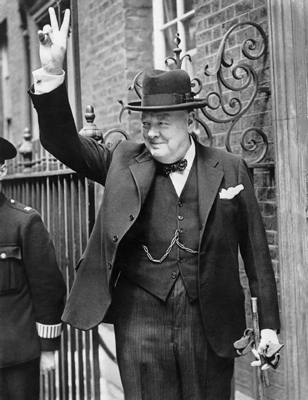Do you know who presided over the setting up of the National Health Service, or who served the shortest time as leader? Read our timeline of British prime ministers of the 20th century for all the answers.
Robert Gascoyne-Cecil 3rd Marquess of Salisbury
Conservative 1895 to 1902
Salisbury was the last peer to serve as PM (this was his third tenure), with the brief exception of Douglas Home (below) who renounced his peerage within a few days of being appointed.
Arthur James Balfour
Conservative 1902 to 1905
Balfour was the nephew of the Marquess of Salisbury but his cabinet was divided on the issue of free trade and without the support of Edward VII he was forced to resign in December 1905.
Sir Henry Campbell-Bannerman
Liberal 1905 to 1908
Following Arthur James Balfour’s resignation, Edward VII invited the leader of the next largest party, Sir Henry Campbell-Bannerman, to form a government. He was the first leader to officially use the title of ‘Prime Minister’.
Herbert Henry Asquith
Liberal 1908 to 1916
Asquith is the only Prime Minister to have taken office on foreign soil. At the time that he succeeded Campbell-Bannerman, Edward VII was in Biarritz so Asquith travelled there for the official ‘kissing-hands’ ceremony.

David Lloyd George
Liberal 1916 to 1922
One of the 20th centuries most radical thinkers, Lloyd George was the first and only Welshman to hold the position of prime minister, introducing state pensions and waging a war on poverty.
Andrew Bonar Law
Conservative 1922 to 1923
Law was prime minister for just 209 days. He retired due to ill health in May 1923 and died of throat cancer six months later.
Stanley Baldwin
Conservative 1923 to 1924
Baldwin took over as prime minister after Bonar Law retired but he was soon ousted from his first term, albeit temporarily.
James Ramsey MacDonald
Labour 1924 to 1924
In 1924 Ramsey MacDonald was asked by King George V to form a government when Stanley Baldwin’s Conservative majority proved ungovernable, and his was the first Labour government.
Stanley Baldwin
Conservative 1924 to 1929
In his second tenure as prime minister Baldwin extended the right to vote to women over 21.
James Ramsey MacDonald
Labour 1929 to 1935
In his second minority government in 1929, MacDonald appointed Margaret Bondfield as the first female cabinet minister, but forming a cross-party government proved his downfall.
Stanley Baldwin
Conservative 1935 to 1937
By taking office as prime minister for the third time Baldwin remarkably served under three monarchs.
Neville Chamberlain
Conservative 1937 to 1940
Chamberlain famously declared “I believe it is peace for our time” following a meeting in 1938 with Adolf Hitler.
Sir Winston Churchill
Conservative 1940 to 1945
Following Chamberlain’s resignation in 1940, Churchill succeeded him as prime minister of an all-party coalition government.
Clement Attlee
Labour 1945 to 1951
Taking over from Churchill at the end of the war, Attlee is perhaps best remembered for setting up the National Health Service.

Sir Winston Churchill
Conservative 1951 to 1955
While serving his second term as prime minister Churchill was awarded the Nobel Prize in Literature in 1953 for his many published works.
Sir Anthony Eden
Conservative 1955 to 1957
Eden is best remembered for his controversial handling of the Suez Crisis, which led to his resignation.
Harold Macmillan
Conservative 1957 to 1963
Macmillian took over as leader following Eden’s resignation and led the nation through the Cuban Missile Crisis. He was made Earl of Stockton in 1984 and died in 1986.
Sir Alex Douglas-Home
Conservative 1963 to 1964
The aristocratic Douglas-Home took on the trade unions but only served as prime minister for 363 days , the second shortest premiership in the 20th century.
Harold Wilson
Labour 1964 to 1970
Wilson won his first election in 1964 but he actually visited 10 Downing Street many years before, when he was eight-years-old, so his aspirations began early.
Sir Edward Heath
Conservative 1970 to 1974
Grammar school educated Heath served in the Second World War, reaching the rank of Lieutenant Colonel.
Harold Wilson
Labour 1974 to 1976
Wilson famously rebuffed a schoolboy who threw a stinkbomb at him by saying “with an arm like that he ought to be in the English Cricket XI.”
James Callaghan
Labour 1976 to 1979
Callaghan is the only prime minster to have also held the three offices of Chancellor of the Exchequer, Home Secretary and Foreign Secretary.

Baroness Margaret Thatcher
Conservative 1979 to 1990
A formidable leader or a tyrant? Britain’s first woman prime minister divided opinion like none before her, and she passed away in 2013.
Sir John Major
Conservative 1990 to 1997
From his humble beginnings as the son of a former music hall star, Major was reportedly inspired to become a politician after watching Harold Macmillan present his only budget as Chancellor of the Exchequer.
Tony Blair
Labour 1997 to 2007
Blair was the longest serving Labour prime minister and although he initiated reforms in the House of Commons, he was criticised for his involvement in the Iraq War.
Read more:






 © 2024
© 2024